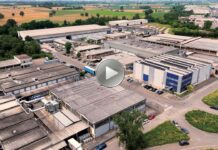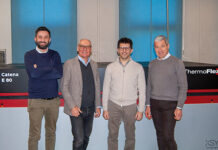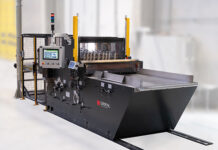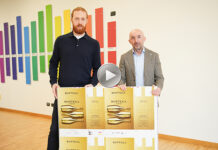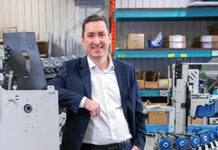Nordmeccanica in cooperation with Parma University and a selected group of qualified technical partners launched an R&D project named Remopack (Recyclable mono-material for packaging)
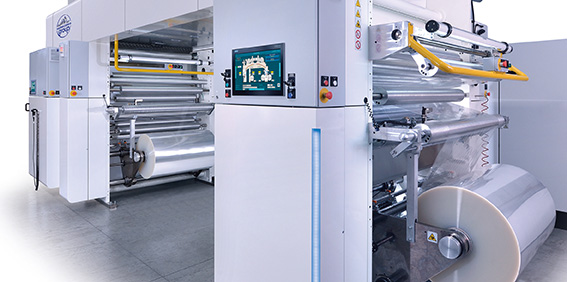
The project will require a significant investment over the 3 years planned duration. To confirm the importance of the topic and the attention of the political authorities to the matter the project has been awarded a not-repayable financing from the Italian Ministry of Economic Development.
Target of the project will be the development of a mono-material high barrier fully recyclable flexible packaging structure. With the term mono-material is indicated a laminated compound made from layers of films manufactured out of the same base polymer. Current guidelines indicate the minimum percentage to qualify for mono-material in a range from 80 to 90%, variable country by country. Being the remaining percentage a tolerated amount of not-recyclable components.
The final target of the project is a laminated structure made of multiple film layers, all layers made of the same fully recyclable polymer. The structure through the combined contribution of lamination completed with the use of fully recyclable adhesives, barrier coatings, AlOx deposition in a vacuum metallizer, and technologies developed to emend the typical AlOx layer fragility will have to achieve very high mechanical and barrier properties to comply with the increased demand of performances recorded for flexible packaging. The target mono-material percentage for the project is to be as close as possible for the entire laminated compound to fully recyclable.
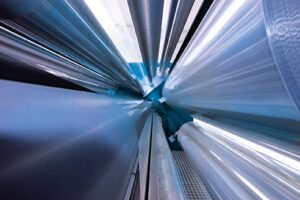 The innovation consists in pushing recyclability to the extreme while providing a process cost competitive with traditional technologies.
The innovation consists in pushing recyclability to the extreme while providing a process cost competitive with traditional technologies.
The development of the project will require the contribution of many high-level partners. All of them leading their specific market segment. Managing an R&D group of this complexity targeting highly innovative results requires extended expertise and significant technical knowledge. Nordmeccanica has been approved by public authorities in the leading role in recognition of the achievements reached in previous R&D projects and in acknowledgement of its historical role as innovator in our industry.
Partner in the leadership role will be the University of Parma. With its Interdepartmental Research Center for Packaging, University of Parma is leading the research at academic level in this segment in Europe. Parma is in fact the home base of EFSA, the European Food Safety Authority, the authority responsible to screen and rate new technologies and innovations in the food supply chain.
FACE TO FACE with Vincenzo Cerciello, Nordmeccanica vice president

What will be the role of Nordmeccanica in this project?
“Nordmeccanica covers, in collaboration with the University of Parma, the role of project coordinator. We will practically be the collector of the results of all steps and we will coordinate the actions of the various team members. Obviously, we will take care of the technological processes related to converting phases that are carried out by means of our machines: couplings, coatings, metallisations.
From the point of view of production technologies, will existing machines be used, or do you envisage evolutions to meet the production needs of these mono-materials?
“The goal is to allow converters to create innovative flexible packaging at low cost, consequently the use of existing machine parks is one of the basic data of the project. It is understood that if the development of research suggests the need to use processes that require innovation also in the machinery, such innovations will be suitably evaluated and developed”.
What are the technical complexities to guarantee a completely recyclable mono-material packaging?
“The use of the same recyclable material in the highest possible percentage in the composition of the laminate complex. Today, packaging has the task of guaranteeing the lifetime of the packaged product. In other words, to extend the expiry terms of a given product as much as possible. This is achieved by shielding the material from light, oxygen, humidity, etc. The result is obtained by laminating materials that offer, in the packaging as a whole, a guarantee of performance. It is the inhomogeneity of the laminated materials that prevents their recycling. Glass and metal are easily recycled as the packaging, for example glass bottles and jars, are homogeneously made up of a single material, glass. In the case of flexible packaging, the great variety of benefits offered by this category of products is paid for by the fact that a complex of laminates made from not-homogeneous materials does not allow their recycling. The single-material complex is by definition made from a single material and therefore recyclable in terms of the great energy savings offered by plastic polymer technology”.
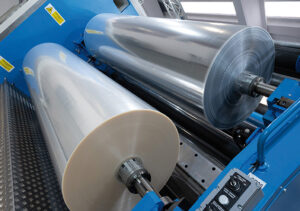
Is mono-materiality the only development trend on which Nordmeccanica is focused or are there other issues on which you plan to intervene?
“Innovation in this sector has seen various phases, the initial one relating to biodegradability is going through a slowdown phase and, to date, the direction towards recyclability prevails. This does not concern all areas of the world, it is a trend that is very topical in Europe where recycling processes are well developed. So the most appropriate answer is: studies and R&D projects on recyclability are very topical and in a well advanced stage of development. Other technologies are in the initial analysis phase and are destined or not to develop over a time horizon that can be evaluated in years”.





